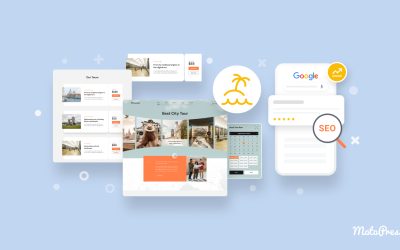Table of Contents
- 1 Importance of Web Design
- 2 Elements of Effective Web Design
- 3 Mobile-Friendly Design
- 4 E-Commerce Web Design
- 5 User Interface (UI) and User Experience (UX) Design
- 6 Search Engine Optimization (SEO) and Web Design
- 7 Content Management Systems (CMS)
- 8 Web Design Trends
- 9 Choosing a Web Design Agency
- 10 Conclusion
In this article, we’ll explore the world of web design specifically tailored for Zimbabwean businesses. Whether you’re just starting or looking to revamp your existing website, we’ll provide you with all the key information you need to know about creating a visually appealing and functional online presence for your business.
So sit back, relax, and let’s get into it!
Importance of Web Design
In today’s digital age, having a well-designed website is crucial for any business or individual looking to establish an online presence. Web design plays a pivotal role in creating a positive first impression, establishing credibility, improving user experience, and enhancing brand perception. Whether you’re a small start-up or a large corporation, investing in professional web design can have a significant impact on your online success.
Creating a Positive First Impression
When it comes to websites, first impressions matter. Your website is often the first point of contact between your business and potential customers. It is essential to make a strong positive impression right from the start. A well-designed website with an attractive layout, engaging visuals, and easy-to-navigate interface can captivate visitors and encourage them to stay longer on your site. On the other hand, a poorly designed website can lead to high bounce rates and potential customers leaving without exploring further.
Establishing Credibility
In a world where consumers have countless options at their fingertips, establishing credibility is crucial for gaining trust and standing out from the competition. A professionally designed website can help instill confidence in visitors and potential customers, making them more likely to engage with your brand or make a purchase. A well-designed website will reflect your professionalism, attention to detail, and commitment to providing a positive user experience.
Improving User Experience
User experience (UX) is a critical aspect of web design. A website that is intuitive, easy to navigate, and visually appealing enhances the overall user experience. By creating a seamless and user-friendly experience, visitors are more likely to stay on your site longer, explore different pages, and ultimately, take the desired action, whether it’s making a purchase, signing up for a newsletter, or contacting you for more information.
Enhancing Brand Perception
Your website represents your brand and has the potential to leave a lasting impression on visitors. A well-designed website that aligns with your brand identity can help strengthen brand perception and create a positive association in the minds of your target audience. Consistent use of colors, typography, and visuals that reflect your brand personality can contribute to brand recognition and differentiation from competitors. A cohesive and visually appealing website can leave a lasting impact and lead to increased brand loyalty and customer engagement.
Elements of Effective Web Design
To achieve a successful website, several key elements of effective web design should be considered. These elements include layout and navigation, color scheme and typography, images and visuals, responsive design, and loading speed.
The layout and navigation of a website are crucial for providing a smooth and intuitive browsing experience. A well-organized layout with clear and easily accessible navigation menus helps visitors find the information they are looking for quickly. Intuitive navigation improves user experience and keeps visitors engaged, reducing frustration and increasing the chances of conversions.
Color Scheme and Typography
The choice of colors and typography can significantly impact the overall look and feel of a website. Colors convey emotions and evoke certain feelings in users. A harmonious color scheme that aligns with your brand values can create a visually appealing and cohesive website design. Typography should be chosen carefully to reflect your brand’s personality and ensure readability across different devices and screen sizes.
Images and Visuals
Visual elements, such as images, videos, and graphics, play a crucial role in capturing the attention of visitors and enhancing the overall aesthetics of a website. High-quality, relevant images can convey your brand message effectively and help create an emotional connection with your audience. It is important to optimize images for web use to ensure fast loading times without compromising quality.
Responsive Design
With the increasing use of mobile devices, having a responsive design is essential. Responsive design ensures that your website adapts and displays properly on different screen sizes and devices, including smartphones and tablets. A responsive website improves user experience and ensures that visitors can easily access and navigate your site regardless of the device they are using.
Loading Speed
In today’s fast-paced digital world, no one likes to wait for a website to load. Slow loading times can lead to high bounce rates and a negative user experience. Optimizing your website for fast loading speeds is crucial for retaining visitors and improving conversion rates. This can be achieved through techniques such as optimizing images, minifying code, and leveraging caching.
Mobile-Friendly Design
Importance of Mobile-Friendly Websites
Mobile devices have become an integral part of our lives, and more people are using their smartphones and tablets to browse the internet. It is crucial for businesses to have a mobile-friendly website to cater to the growing number of mobile users. A mobile-friendly website ensures that your content is accessible and user-friendly on smaller screens, providing a seamless browsing experience.
Responsive Web Design
Responsive web design is a design approach that focuses on delivering an optimal viewing experience across different devices and screen sizes. With responsive design, your website automatically adjusts its layout, content, and visuals to fit the screen it is being viewed on. This eliminates the need to create multiple versions of your website for different devices and ensures a consistent user experience.
Mobile App Development
In addition to having a mobile-friendly website, businesses can also consider developing a mobile app to further enhance the mobile experience for their users. Mobile apps allow for more personalized and tailored interactions, increased functionality, and offline access to content. Depending on your business goals and target audience, a mobile app could be a valuable addition to your digital strategy.
E-Commerce Web Design
Key Features of E-Commerce Websites
E-commerce websites have unique design requirements to ensure a seamless online shopping experience. Key features of e-commerce web design include clear product catalogs, intuitive search functionality, prominent calls to action (such as “Add to Cart” buttons), user-friendly shopping carts, responsive design, secure payment gateways, and customer review functionality.
Shopping Cart Functionality
An effective e-commerce website should have a shopping cart functionality that is easy to use and visually appealing. This includes features such as displaying the cart contents, allowing users to modify quantities or remove items, and providing a checkout process that is clear and user-friendly.
Payment Gateways and Security
Security is of paramount importance in e-commerce web design. Integrating secure payment gateways ensures that customers can make transactions on your website with peace of mind. SSL certificates, encryption protocols, and compliance with industry security standards are essential to protect sensitive customer information and build trust.
Product Catalog Management
Managing and organizing your product catalog is crucial for e-commerce success. A well-designed product catalog with clear categories, filters, and search functionality makes it easy for customers to find the products they are looking for. Product images, descriptions, specifications, and pricing should be displayed in a user-friendly manner.
Customer Reviews and Testimonials
Customer reviews and testimonials play a significant role in building trust and confidence in potential customers. Incorporating a customer review and rating system into your e-commerce website allows visitors to see what others have to say about your products or services, increasing credibility and encouraging conversions.
Sales Analytics and Reporting
Effective e-commerce web design should include built-in sales analytics and reporting capabilities. This allows businesses to track and analyze customer behavior, sales performance, and other key metrics. By monitoring the analytics, businesses can make data-driven decisions to optimize their e-commerce strategies and improve overall performance.
User Interface (UI) and User Experience (UX) Design
Understanding UI and UX
User interface (UI) and user experience (UX) design are two interconnected aspects of web design that focus on creating an engaging and user-friendly experience for website visitors. UI design deals with the visual elements and interactive features of a website, while UX design focuses on the overall usability and user satisfaction.
Creating a User-Centric Design
To create a user-centric design, it is important to understand the needs and preferences of your target audience. Conducting user research, developing user personas, and creating user flows can help uncover insights about user behavior and preferences. By designing with the user in mind, you can create a website that meets their needs and provides a positive experience.
Wireframing and Prototyping
Before diving into the actual design process, it is essential to create wireframes and prototypes to visualize the layout, structure, and functionality of your website. Wireframes are simple, black-and-white visual representations of the website’s structure, while prototypes provide a more interactive and realistic simulation of the final product. These tools help ensure that your design meets the requirements and expectations of both users and stakeholders.
Usability Testing and Optimization
Usability testing involves gathering feedback from real users to evaluate the effectiveness and efficiency of your website’s design. By observing how users interact with your website, you can identify usability issues and areas for improvement. Usability testing helps uncover user pain points and provides valuable insights for optimizing the design and enhancing the user experience.
Search Engine Optimization (SEO) and Web Design
Importance of SEO in Web Design
Good web design and SEO go hand in hand. When designing a website, it is essential to consider SEO best practices to ensure that your website is visible to search engines and can rank well in search engine results. SEO-friendly web design helps improve organic search visibility, drive targeted traffic to your site, and increase the chances of conversions.
A well-structured website with a logical hierarchy and clear navigation is crucial for search engine crawlers to understand the content and context of your website. Properly organized URLs, logical page structure, and intuitive navigation menus make it easier for both users and search engines to find and navigate your site.
Keyword Research and On-Page Optimization
Keyword research is a fundamental aspect of SEO that helps identify the words and phrases people use when searching for products or services related to your business. Integrating targeted keywords into your website’s content, meta tags, headings, and URLs can improve your website’s visibility in search engine results.
Mobile Optimization
With the increasing use of mobile devices for web browsing, mobile optimization is crucial for SEO. Mobile optimization involves creating a mobile-friendly design, ensuring fast loading speeds on mobile devices, and implementing responsive design principles. Search engines prioritize mobile-friendly websites in their rankings, and having a mobile-optimized website can significantly improve your search engine visibility.
Website Speed and Performance
Website speed and performance are important factors for both user experience and SEO. Slow-loading websites can lead to high bounce rates and a negative user experience, impacting your search engine rankings. Optimizing your website’s performance by compressing images, minifying code, and leveraging caching techniques can significantly improve loading times and overall user satisfaction.
Link Building and Off-Page SEO
While web design primarily focuses on on-page optimization, off-page SEO plays a crucial role in improving your website’s visibility and authority. Off-page SEO involves activities such as link building, social media marketing, guest blogging, and online PR. Integrating these practices into your overall digital marketing strategy can help increase your website’s visibility, attract quality backlinks, and improve your search engine rankings.
Content Management Systems (CMS)
Benefits of Using a CMS
A content management system (CMS) is a software that allows you to create, manage, and update the content on your website without the need for technical coding knowledge. Using a CMS offers several benefits, including ease of use, flexibility, scalability, and the ability to manage content from anywhere with an internet connection.
Popular CMS Options
There are numerous CMS options available, each with its own set of features and capabilities. Some popular CMS options include WordPress, Joomla, Drupal, and Shopify (for e-commerce websites). Choosing the right CMS for your website depends on your specific needs, budget, and technical expertise.
Customizing and Managing Content
A CMS provides a user-friendly interface that allows you to customize and manage your website’s content effortlessly. You can easily create new pages, update existing content, add images or videos, and publish blog posts. Advanced CMS options also offer plugins and themes that allow for further customization and enhanced functionality.
Security and Updates
One of the advantages of using a reputable CMS is the built-in security features and regular updates. CMS providers constantly release updates to address security vulnerabilities and improve functionality. It is important to keep your CMS and associated plugins/themes up to date to ensure your website is secure and protected against potential threats.
Web Design Trends
Responsive Design
Responsive design continues to be a prominent web design trend. With the increasing use of mobile devices, it is crucial to create websites that adapt to different screen sizes and devices. Responsive design ensures that your website looks and functions well on smartphones, tablets, and desktop computers, providing a consistent user experience.
Minimalistic and Clean Layouts
Minimalistic and clean layouts have gained popularity in recent years. These designs focus on simplicity, whitespace, and a clutter-free interface. Minimalistic designs are visually appealing, easy to navigate, and help highlight key content and visuals.
Microinteractions
Microinteractions are small, subtle animations or interactive elements that provide feedback or enhance the user experience. Examples of microinteractions include button hover effects, loading animations, or form validation indicators. These small details contribute to a more engaging and interactive website experience.
Chatbots
Chatbots are becoming increasingly popular in web design, especially for businesses that want to provide instant customer support or assistance. Chatbots can handle common customer queries, provide personalized recommendations, and collect user data for future reference. Integrating chatbots into your web design can improve user engagement and enhance customer satisfaction.
Dark Mode
Dark mode, also known as night mode, has gained popularity in recent years. Dark mode offers an inverted color scheme, with dark backgrounds and light text. This design trend reduces eye strain, improves readability, and provides a visually appealing alternative to traditional light mode.
Motion Design and Animation
Motion design and animation add an interactive and dynamic element to web design. From subtle hover effects to full-screen animations, motion design can captivate and engage users, leading to increased time spent on the website and enhanced user experience.
Choosing a Web Design Agency
Determining Your Needs and Goals
Before choosing a web design agency, it is important to determine your specific needs and goals. Define your target audience, desired functionalities, and the purpose of your website. Understanding your requirements will help you find an agency that can meet your expectations and deliver a website that aligns with your objectives.
Portfolio and Client References
When researching web design agencies, reviewing their portfolio and client references is essential. Look for agencies that have experience in your industry or have worked on similar projects. By reviewing their past work and testimonials from previous clients, you can assess their capabilities, design style, and ability to deliver quality results.
Expertise and Services Offered
Consider the expertise and range of services offered by a web design agency. Do they have experience in responsive design, e-commerce, or custom web development? Can they provide additional services such as SEO, content creation, or ongoing website maintenance? Choosing an agency that offers comprehensive services can save you time and ensure a seamless workflow.
Communication and Collaboration
Effective communication and collaboration are crucial when working with a web design agency. Find an agency that values open communication, provides regular updates, and involves you in the design process. Clear communication channels and a collaborative approach ensure that your vision and requirements are understood and implemented effectively.
Pricing and Contracts
Evaluate the pricing structure and contracts offered by different web design agencies. Understand the cost of the project, including any additional fees or ongoing maintenance costs. Review the contract terms, including the timeline, deliverables, and ownership rights. It is important to choose an agency that offers transparent pricing and contract terms that align with your budget and expectations.
Conclusion
Professional web design plays a vital role in the success of any business or individual in today’s digital landscape. It is crucial for creating a positive first impression, establishing credibility, improving user experience, and enhancing brand perception. By incorporating the elements of effective web design, such as a well-organized layout, attractive visuals, and responsive design, businesses can create a website that engages visitors, drives conversions, and supports their overall business goals. Continuous improvement and adaptation to new web design trends, along with the integration of SEO best practices and user-centric design principles, are essential for maintaining a competitive edge and achieving long-term online success. Therefore, investing in professional web design should be a priority for businesses looking to thrive in the digital age.















